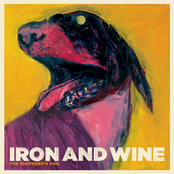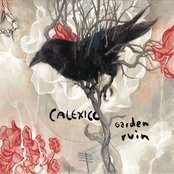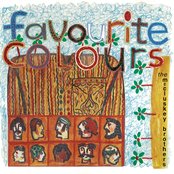Last week, I posted the first part of a remarkable article by Susan M. Luzy about the history of the families connected with the Royal Echange pub in Walsall Wood. This unassuming, but well-loved pub has been the subject of much local historical study, and since the first part of this article was posted, local historians have turned up some remarkable material which Andy Dennis, David Evans and a whole host others are working on in the background.
The Royal Exchange is apparently soon to undergo yet more change as an renovation is soon to take place. David Evans popped in to the pub this week to take some pictures of the Exchange as it is now, in order to record it for posterity – I’ve interspersed them in this post.
Susan’s work builds upon and compliments the documentary series by both David Evans and Ann Cross. Susan also contributed a brilliant comment here a while back.
I am hugely indebted to Susan and all the other fine folk who have worked on the history of the Royal Exchange, and the wider area of Walsall Wood in general; I don’t think many of us suspected how fascinating the place could be. Thanks, as ever, for all the contributions and comments.
I repeat the last paragraph of the previous article here for continuity. Susan wrote:
The story of the Clews and Jackson Families and The Royal Exchange pub in Walsall
Part 2
Further research revealed that John Jackson’s wife Ruth died between July and September 1874 at only 44, and four of their eight children were still under eleven years old. He naturally returned from Northumberland to his family in Walsall Wood, and remarried towards the end of 1874. His new wife was Hannah Eliza Preston. So many of these women died young….
The 1870s were indeed a terrible time for the two families. William Clews’ son Joseph was nowhere to be found on the 1881 census or any other so I began to think he had died. Sure enough he was recorded in a database relating to coal mining accidents. He was working as a pikeman in Harden Colliery, Walsall, owned by E. Crapper and Co., when suddenly on 27th January 1877 he was buried by a fall of coal in a 4 yard seam and died the same day. He was only 23. A pikeman was responsible for dropping the roof in the “thick” seam. This was a very dangerous and skilled job and one of the best paid in the mine.
In 1881 the census shows that little Mary Ann Tuck, Sarah Jane’s daughter, was living with a couple called John and Jane Guy who lived in Stockley in Durham. They stated that Mary Ann was their niece. They were both from Staffordshire so they might well have been related to the Jacksons. Henry Tuck, little Mary Ann’s brother, as we’ve seen, was with his grandmother and aunt in Walsall.
The 16 year old Priscilla Jackson helping in the Royal Exchange pub in 1881 was John Jackson’s daughter by his first wife. She was born in 1865 in New Delaval in Northumberland when her father was employed in the big colliery there. Twelve year old Isabella Jackson who was also living at the pub in 1881 was Richard Jackson’s daughter.
By 1881 the two families were mostly grouped together in or around Lichfield Road not far from the Royal Exchange. William Clews aged 60 had moved back to Walsall Wood and lived in Lichfield Road with his brother Charles and his youngest son, James aged 15, who was already working in a mine. Next door were his two brothers in law Richard Jackson and John Jackson. His brother John Clews lived further along Lichfield Road and his other brother James Clews lived not far away in Coppice Road.
William Clews died in 1889, aged 68. Maria Jackson, his mother in law, was still alive in 1891 and still head of a large household but had moved to Shire Oak in the Eccles district of Stonnall with several of her grandchildren: Richard Clews, 30, James Clews, 25, and Henry Tuck, 17, all employed as coalminers, also Mary Tuck, 12 and Isabella Jackson 21 who was a domestic servant. Elizabeth Short, a widowed niece aged 49 was also part of the household. The family certainly stuck together!
The Royal Exchange in 1891 was managed by James Welsh, licensed victualler, who had married the widowed Isabella Cross née Jackson. They were living with her children Sarah Cross aged 15 and William Cross aged 13, and Sarah Jane Jackson aged 15, who was recorded as a domestic servant. They had another servant, Sarah Davis aged 20 and a visitor called James Rock. Richard Jackson was living at the back of the Royal Exchange with his wife Elizabeth and their 3 children. He and his 17 year old son Samuel were both coal miners. Two other families, eight people in all, were also recorded at the back of the Royal Exchange.
James Welsh and Isabella had both died by 1901 but there were still Jacksons at the Royal Exchange. Isabella’s son William Cross aged only 23 was now the “publican”, employing his two cousins, 25 year old Jennie Jackson as housekeeper and 19 year old Florrie Jackson as barmaid together with 17 year old Alice Painter as domestic servant! Richard Jackson, his wife and two coal miner sons were still living at the back of the Royal Exchange. A 9 year old grand daughter Florrie Griffiths also lived with them.
In 1911 William Cross was still licensed victualler, own account, of the Royal Exchange. He still had two cousins helping him as “assistants in business”, Florrie Jackson aged 27 and Florrie Griffiths aged 17. He stated that the Royal Exchange had 11 rooms. Richard Jackson and his wife must have died by then as they were not recorded on the census.
Maria Jackson died in the summer of 1895, having reached the ripe old age of 83 quite an exploit at that time. She was widowed at about 43 and lost four daughters in infancy. She had outlived all her other daughters, Priscilla, Mary Ann, Sarah Jane, and even Isabella who died just before her in spring 1895. She also outlived her sons in law William Cross, Robert Tuck and William Clews and her grandchildren Joseph Clews and Mary Ann Boot née Clews, both children of William Clews. She must have been a truly remarkable woman to have been always at the centre of her huge family and to have weathered so many storms. At the end of her life she was still living with several of her grown-up grandchildren.
Amazingly, several of William Clews’ children and grandchildren perpetuated the family tradition of working “down the mine” until at least 1911, and probably longer.
Joseph Clews, the eldest died in a mining accident in January 1877 as we have seen.
Charles Clews remained in Walsall Wood until some time between 1901 and 1911 when he and his family moved to Mansfield in Nottinghamshire where there were other coalfields. He and Sarah had seven sons and five daughters, and at least five of their sons became coal miners. The eldest, William, born in 1877, died in Walsall between 1901 and 1911 in his twenties, probably in a mining accident, and his widow married another young coalminer called Charles Chapman.
Priscilla Clews married a coal miner called Robert Grieves in Tynemouth. Robert worked in the Burradon and Wallsend Collieries in Tynemouth and their two sons also became coal miners.
Mary Ann Clews married a colliery engine driver called Thomas Boot and in 1881 they were living in Shire Oak, Stonnall. They then moved to Walsall Wood and remained there until at least 1911. They had four sons, at least one of whom became a coalminer.
Richard Clews, who in 1891 aged 30 was still living with his grandmother, by 1901 had married a tailoress called Frances Perry who was six years his senior. He had moved to a place called Brereton, Wednesford and was working as a hewer of coal. They had two daughters and a son who was a newsagent aged 16 in 1911.

I’m sure I remember the small add-on here being an Outdoor called ‘My Cellar’. Am I imagining that? Cracking photo by David Evans.
Emma Clews married a coalminer called John Lowbridge. In 1901 they were still living in Walsall Wood but by 1911 they had moved to Pilsley near Chesterfield in Derbyshire. John was still a hewer below ground and their five sons all went into the mine from an early age.
James Clews was also a hewer. In 1901 he was living in Shire Oak but by 1911 he and his large family had moved to Hintons Buildings, Lichfield Road in Walsall Wood. In 1911 on census night he and his 15 year old son James Henry were staying with his brother Richard in Wednesford and it was his wife Sarah who filled in their census declaration back in Walsall Wood. By 1911 they had eight children and three of their five sons age 13, 15 and 17 were already working in the mine.
All in all, a good illustration of the solidarity amongst coal mining families.








 RSS - Posts
RSS - Posts




Outdoors…
My Cellar…Ansells
Good Cheer Celars…M&B
You’re right about the outdoor, I think. The pub was Ansells, years ago. The Farmer’s Boy in Rushall was similarly equipped.
Spent many happy hours there during my early adult years happy memories .From the outdoor you could purchase party seven cans of beer ,not like your cans of today 7pints in one can!!!!
There was a Thomas Boot who was manager of Walsall Wood Co-op in the 1940’s. Any relation?
I lived at the Eccy between 2005-2009 with my mum who managed the pub alongside Paul Dalloway. I have so many brilliant memories of our football & pool teams. Emyl was a regular who very sadly passed away only a few years ago. He was only in his forties & left a young wife & baby. Sadly Paul Dalloway also passed away a couple of years ago. I’ll never forgot my time at the Eccy.
I used to go in the Exchange around about 15 years ago, a nice Welshman was running it then, i can remember the wooden partisions in the bar with stained glass in them. It was like walking into a little part of Wales. Going back to the late 60s, i remember the off License selling party cans of beer, as well as many othier things like KVE scratchings yum yum!
Hi Bob
Many thanks for this excellent presentation and especially to Susan for her fine details. In the blog article”Going by the book” the St John’s church history gives a reference to a James Clews…. Coal miner..who lived in Brookland Road..he was my great uncle…one of the stained glass windows is in his memory .
The glass artwork is crafted in a modernistic style.
Kind regards
David
A big thank you to Susan for her great piece and as always to Bob. Also many thanks to David for all the great photos – some in particular have brought back many happy memories.
Best wishes
Ann.
Pingback: Under the thatch | BrownhillsBob's Brownhills Blog
I lived here briefly in 2001-2002 … myself and my siblings were certain it was haunted especially the function room which we had to pass to go in and out of the flat haha
“The Royal Exchange Inn, previously known as the Black Cock Inn,” so says a George Street ..of Streets Corner, Walsall Wood, indenture of the mid 1800s.